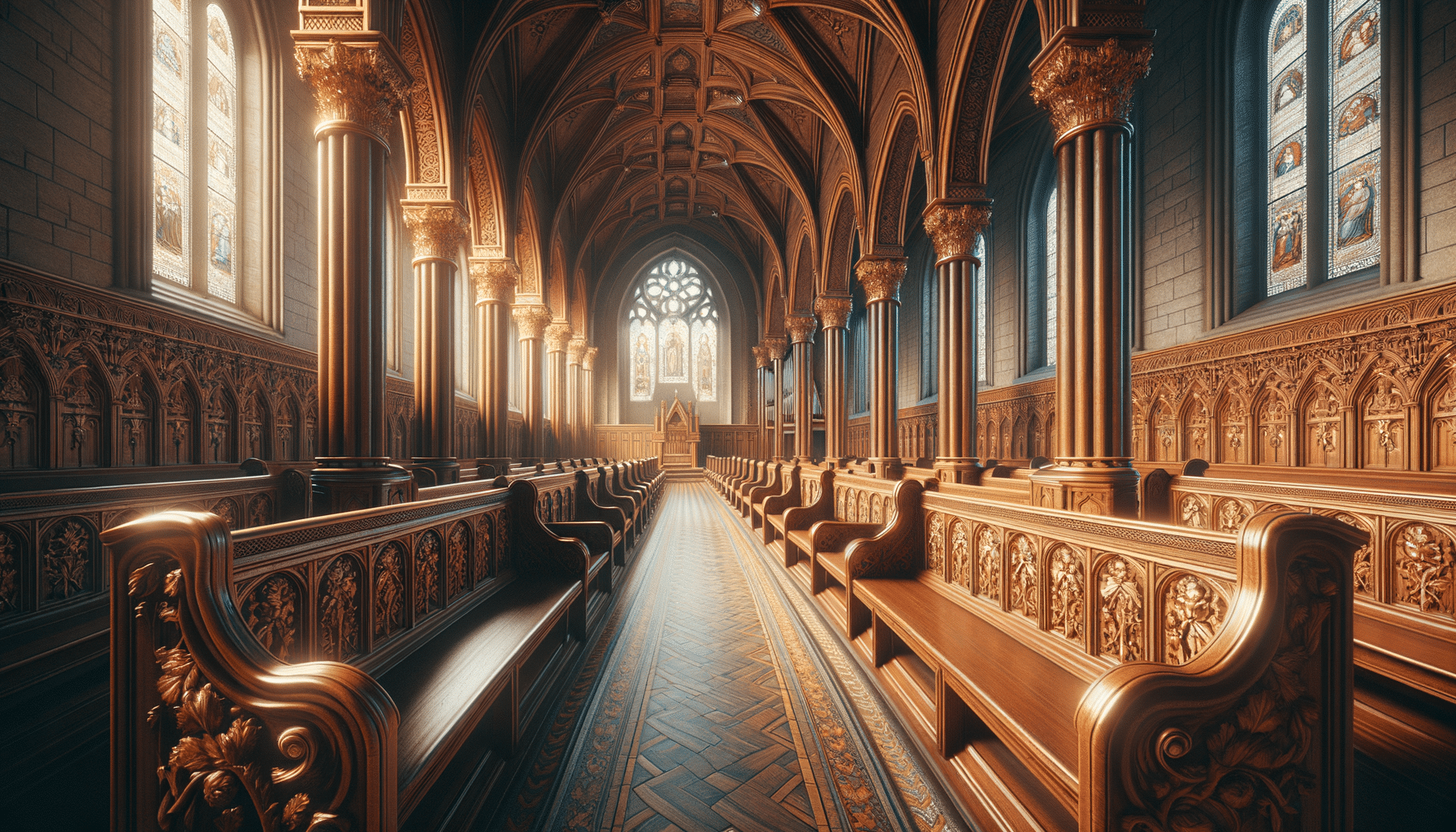Exploring the Significance and Design of Church Pews and Benches
Church pews and benches hold historical and cultural significance, serving as more than just seating arrangements in places of worship.

The Historical Significance of Church Pews and Benches
The history of church pews and benches is as rich and varied as the structures they inhabit. Originally, churches did not have fixed seating. Congregants would stand or bring their own seating arrangements. It wasn’t until the Protestant Reformation in the 16th century that pews became a standard feature in churches. This change was driven by the need for congregants to sit during lengthy sermons that became common during this period.
Church pews and benches have evolved to reflect the architectural and cultural shifts within religious communities. Initially, pews were simple wooden benches, but over time they became more elaborate, often carved with intricate designs and adorned with religious iconography. The introduction of pews also marked a shift in church architecture, influencing the layout and design of churches to accommodate these seating arrangements.
The presence of pews and benches in churches is not merely functional; it also represents a democratization of the space. Unlike the earlier practice where wealthier individuals could afford private pews, modern pews are communal, reflecting the inclusive nature of contemporary worship practices.
Design and Aesthetics of Church Pews and Benches
The design of church pews and benches is a fascinating blend of functionality and artistry. While their primary purpose is to provide seating, their design often reflects the architectural style of the church. Gothic churches, for example, may feature pews with pointed arches and elaborate carvings, whereas modern churches might opt for minimalist designs with clean lines and simple forms.
Materials used in the construction of church pews and benches have also varied over time. Traditionally, hardwoods like oak and mahogany were favored for their durability and beauty. Today, while these materials are still popular, there is also a trend towards using sustainable and locally sourced materials, reflecting a growing awareness of environmental issues within religious communities.
Furthermore, the design of pews and benches often incorporates elements that enhance the worship experience. Features such as hymn book holders, kneelers, and cushioned seating are common in many churches, providing comfort and convenience for congregants.
The Role of Church Pews and Benches in Community Building
Church pews and benches play a vital role in fostering a sense of community within a congregation. By providing a shared space for worship, they encourage interaction and connection among congregants. The arrangement of pews can influence the dynamics of a service, with circular or semi-circular layouts promoting a more inclusive and participatory experience.
Moreover, pews and benches often serve as a physical representation of the church’s values and mission. For instance, churches that prioritize inclusivity and accessibility may choose to install pews that are wheelchair-friendly or designed to accommodate individuals with mobility issues.
In addition to their role within the church, pews and benches often have a presence in the wider community. Many churches open their doors to local groups and organizations, providing a space for meetings and events. In this way, church pews and benches extend their function beyond the confines of worship, contributing to the social and cultural life of the community.
Modern Innovations in Church Seating
While traditional pews and benches remain a staple in many churches, there has been a growing trend towards innovative seating solutions. Some modern churches are opting for flexible seating arrangements that can be easily reconfigured to suit different types of services and events. This adaptability reflects a broader trend towards multifunctional spaces within religious architecture.
Innovations in materials and design have also led to the development of more ergonomic and comfortable seating options. Padded pews and chairs with lumbar support are becoming increasingly common, enhancing the comfort of congregants during services.
Additionally, technology is beginning to play a role in church seating. Some churches are incorporating features such as built-in charging stations for electronic devices, reflecting the changing needs and habits of congregants in the digital age.
The Future of Church Pews and Benches
Looking ahead, the future of church pews and benches is likely to be shaped by a combination of tradition and innovation. As churches continue to evolve to meet the needs of their congregants, seating arrangements will need to adapt accordingly. This may involve incorporating more flexible and multifunctional designs, as well as embracing new materials and technologies.
At the same time, the historical and cultural significance of pews and benches will continue to be an important consideration. Many churches are choosing to preserve and restore their existing pews, recognizing their value as part of the church’s heritage.
Ultimately, the future of church pews and benches will be guided by the values and priorities of each individual congregation. Whether through traditional or innovative designs, these seating arrangements will continue to play a crucial role in the life of the church and its community.